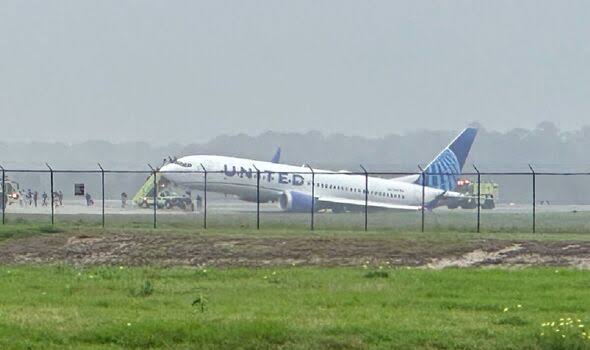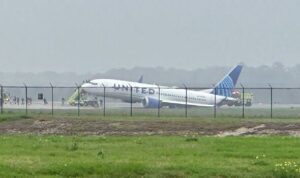
Something unusual is happening with United Airlines. Just days after flight UA507 from San Francisco to Rome was either cancelled or diverted three times in a row, a similar situation occurred with flight UA942 from Washington Dulles to Lisbon, which was cancelled on three consecutive days between August 16 and 18.

One of the cancellations even involved a midair diversion, with the plane turning back to the departure airport 2.5 hours into the flight while over the Atlantic Ocean.
In the earlier incidents, the aircraft involved was a Boeing 777-200ER. However, in the most recent cases, the cancellations affected two Boeing 767-400s and a Boeing 757-200.
It raises the question: what exactly is going on with the airline?
In recent weeks, United Airlines has faced an unusual and concerning series of events involving the cancellation and diversion of multiple flights. What began with the mysterious case of flight UA507 from San Francisco to Rome has now expanded to include flight UA942 from Washington Dulles to Lisbon. The repetition of these incidents across different aircraft models has raised significant concerns and questions about what exactly is happening with one of the world’s largest airlines.
Flight UA507 from San Francisco International Airport (SFO) to Rome Fiumicino Airport (FCO) first caught the attention of the aviation world when it was either canceled or diverted three times in a row. The aircraft involved in these incidents was a Boeing 777-200ER, a reliable workhorse of United’s international fleet. While flight cancellations are not uncommon, the frequency and timing of these incidents raised eyebrows. Passengers were left frustrated and confused as their long-awaited journeys were repeatedly disrupted.
In each case, the flight was either canceled before departure or diverted midair, leading to significant delays and inconvenience for the passengers. United Airlines provided little information about the exact reasons behind these disruptions, fueling speculation about potential technical issues or other underlying problems with the aircraft.
Just as the situation with UA507 began to settle, a similar pattern emerged with flight UA942 from Washington Dulles International Airport (IAD) to Lisbon Humberto Delgado Airport (LIS). Between August 16 and 18, this flight was canceled on three consecutive days. Even more alarming, one of these cancellations involved a midair diversion, with the aircraft turning back to the departure airport 2.5 hours into the flight while over the Atlantic Ocean. The aircraft involved in these cancellations were two Boeing 767-400s and a Boeing 757-200, adding to the perplexity of the situation.
The variety of aircraft involved in these incidents – a Boeing 777-200ER, two Boeing 767-400s, and a Boeing 757-200 – is noteworthy. These models are among the most commonly used in United’s long-haul fleet, and each has a strong safety record. The Boeing 777-200ER, in particular, is a favorite for transatlantic flights, offering reliability and comfort for passengers. The Boeing 767-400 and 757-200, while older, are also known for their durability and have been mainstays in United’s fleet for years.
The fact that these incidents are not isolated to a single aircraft type suggests that the issue may not be related to a specific model but could point to broader operational challenges within United Airlines. Whether these challenges are related to maintenance, staffing, or other factors is still unclear, but the consistency of these cancellations and diversions indicates a pattern that cannot be easily dismissed.
The repeated cancellations and diversions have understandably left passengers frustrated. Many travelers, especially those on long-haul international flights, plan their journeys well in advance, often coordinating with tight schedules and making arrangements that are difficult to change at the last minute. The uncertainty surrounding these flights has disrupted travel plans, leading to missed connections, lost reservations, and significant inconvenience.
Passengers have taken to social media to voice their concerns, with many expressing frustration over the lack of clear communication from United Airlines. While the airline has issued apologies and offered rebooking options, the repeated nature of these incidents has led to a growing sense of unease among travelers.
The exact cause of these disruptions remains unclear, but there are several possible explanations:
One potential cause could be technical problems with the aircraft involved. Modern airplanes are complex machines with thousands of components, and even a minor issue can lead to a flight being canceled or diverted. The fact that multiple aircraft types are involved could suggest a systemic issue, possibly related to maintenance or a specific component that is common across different models.
Another possibility is that United Airlines is facing operational challenges, such as staffing shortages, particularly among maintenance crews or pilots. The airline industry has been grappling with workforce issues since the COVID-19 pandemic, and these could be manifesting in the form of increased cancellations and diversions.
United Airlines may be erring on the side of caution by canceling or diverting flights at the first sign of trouble. This approach, while frustrating for passengers, could be a deliberate strategy to ensure safety and avoid more serious incidents. In the highly regulated airline industry, safety is always the top priority, and it is possible that United is taking extra precautions.
There could also be external factors at play, such as unfavorable weather conditions, air traffic control issues, or geopolitical considerations. However, the repeated nature of these incidents, especially on different routes, suggests that the root cause may lie within the airline itself.
The string of cancellations and diversions is more than just a logistical issue for United Airlines; it could have broader implications for the airline’s reputation and customer trust. Frequent flyers expect reliability from major carriers, especially on long-haul international routes. If these disruptions continue, United risks losing the confidence of its customers, which could lead to a decline in bookings and a tarnished brand image.
Moreover, these incidents could attract scrutiny from aviation regulators. Airlines are required to maintain rigorous safety and operational standards, and repeated cancellations and diversions could trigger an investigation to ensure that these standards are being met. United Airlines may need to take swift and transparent action to address the situation and reassure both passengers and regulators that it is in control of the situation.
For now, passengers booked on United Airlines’ international flights should stay informed and prepared for potential disruptions. It’s advisable to monitor flight status closely, have a backup plan in case of cancellations, and be aware of United’s policies regarding rebooking and compensation.
United Airlines, on the other hand, will need to address these issues quickly and decisively. Whether through enhanced maintenance checks, improved communication with passengers, or other measures, the airline must take steps to restore confidence and ensure that these incidents do not become a recurring problem.
In the ever-competitive airline industry, reliability is key, and United Airlines cannot afford to let these disruptions undermine the trust it has built with its customers. As the situation develops, all eyes will be on United to see how it responds to this unusual and concerning series of events.